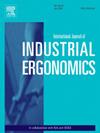Evaluation of thermal properties and thermoregulatory impacts of lower back exosuit using thermal manikin
Abstract
As exoskeletons and exosuits rapidly transition from laboratory to practice, the thermal discomfort posed by wearing the devices is emerging as a significant challenge towards their widespread adoption. We use a thermal manikin coupled with a thermoregulation model to evaluate the thermal properties and thermophysiological impacts of such devices. We measure thermal and evaporative resistances of summer and full clothing coupled with a legacy low-back supporting exosuit and its successor that features two design alterations to improve the user's thermal comfort. We quantify the decrease in evaporative resistance provided by substantial perforation of the back portion of the updated exosuit. The thermal manikin can replicate local skin temperature decrease associated with a release of a dual-mode thigh body attachment measured during a prior human trial. Using the thermal manikin coupled with a thermoregulation model, we simulate how the updated exosuit with several levels of assumed metabolic rate reduction impacts sweat rate, skin and core temperature changes during multiple work-rest cycles in a hot and humid climate. While a large metabolic rate reduction (>15%) is required to significantly slow the core temperature increase, even a minor metabolic rate reduction (5%) could provide a substantial reduction (20%) in the sweat rate (i.e. could reduce dehydration). Results suggest that thermal manikins with a thermoregulation model are an effective and efficient platform for comparing exosuit design features and for improving their thermal aspects. Our study highlights the comprehensive method and importance of considering thermal aspects when designing exosuits for occupational use.

 求助内容:
求助内容: 应助结果提醒方式:
应助结果提醒方式:


